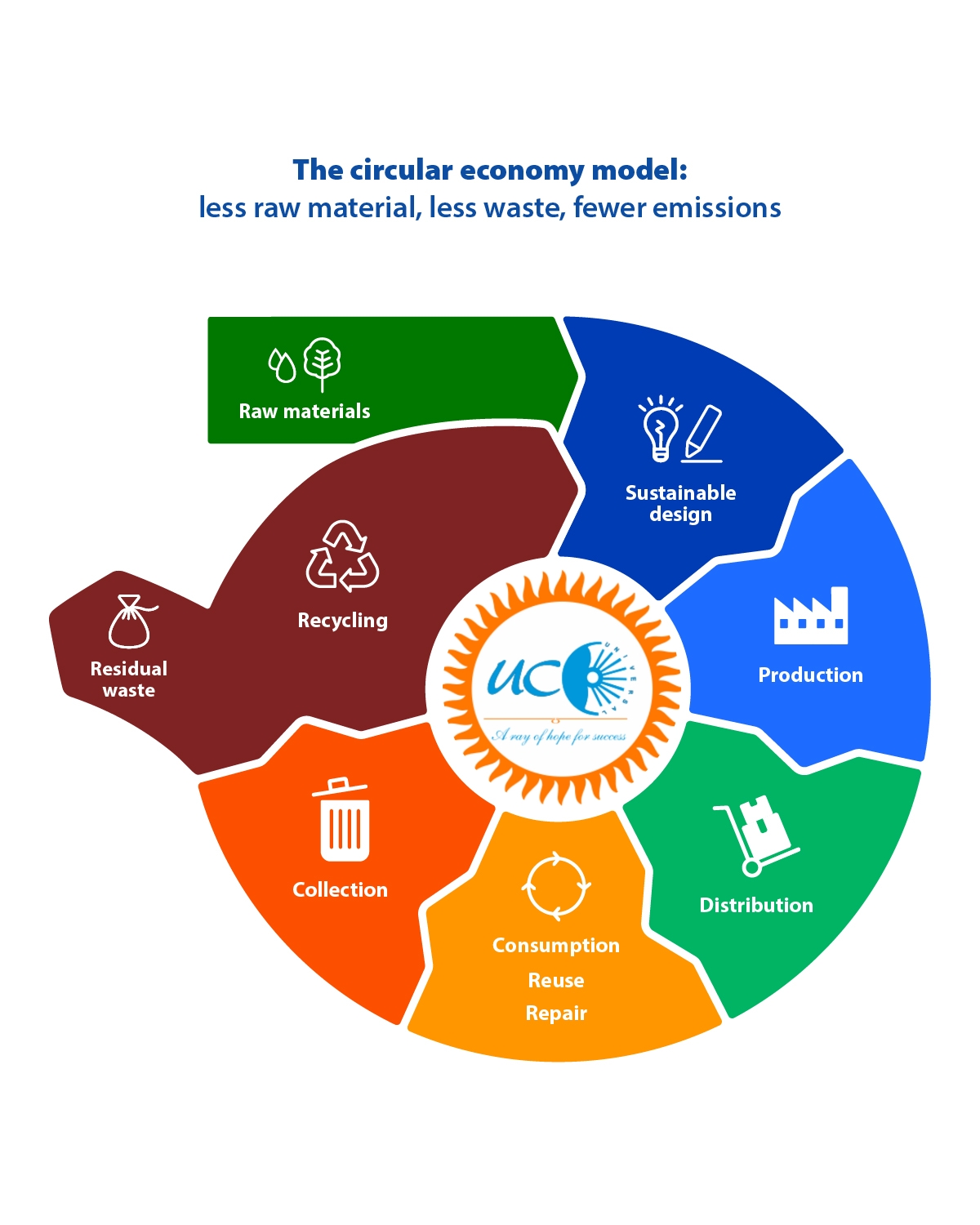The term ‘Circular Economy’ is often seen in news. What are the principles that it is based on? Bring out its relevance for India.
The circular economy is a model of production and consumption, which involves sharing, leasing, reusing, repairing, refurbishing and recycling existing materials and products as long as possible. In this way, the life cycle of products is extended. This is a departure from the traditional, linear economic model, which is based on a take-make-consume-throw away pattern. Circular economy is based upon some simple principles: Designing out waste: Products are designed and optimized for a cycle of disassembly and reuse. Thus, disposal, where large amounts of energy and labour is lost, is not required. Reducing negative externalities: The negative externalities of economic activity include land degradation, water pollution, GHG emissions etc. A circular economy would outline their risks and potential economic impact and focus on system efficiency. Using renewable energy: Renewable energy is required to fuel this cycle in order to decrease resource dependence and increase systems resilience (to phenomena such as oil shocks). Differentiating between consumable and durable components: Circular economy entails minimising the amount of waste creation in the economy through prolonging the use of durable products and shifting to more and more biodegradable ingredients while making day to day consumable products. Replacing consumer with user: Instead of contemporary buy-and-consume economy, durable products are leased, rented or shared. If they are sold, there are incentives or agreements in place to ensure the return and thereafter the reuse of the product. Relevance of Circular economy for India Economic growth: Research suggest that circular economy path to development could bring India annual benefits of US$ 624 billion in 2050 compared with the current development path – a benefit equivalent to 30% of India’s current GDP. Efficient resource utilisation: Circular economy decouples economic growth from natural resource use. This augurs well for India, which is facing various resource constraints in basic utilities as well. For example, 20% of its population lacks access to electricity, 63 million people lack access to clean drinking water etc. Less material use would also reduce exposure to volatile raw materials prices Sustaining increasing population: With India on the path to overtake China as the most populous country in a decade, its waste generation intensity would also increase. Thus, circular economy would help manage increasing waste when solid waste disposal is already an acute crisis in India’s big cities. New opportunities for businesses: By applying circular economy principles, businesses could generate new ideas and explore new ways of working. Environmental Benefits: The circular economy has the potential to reduce greenhouse gases emissions. As per a study, a circular economy development path could halve carbon dioxide emissions by 2030, relative to today’s levels. Policies and initiatives like Zero Effect and Zero Defect, Waste to Energy, etc. can be the ideal for integrating circular economy into the fabric of the Indian economy.




